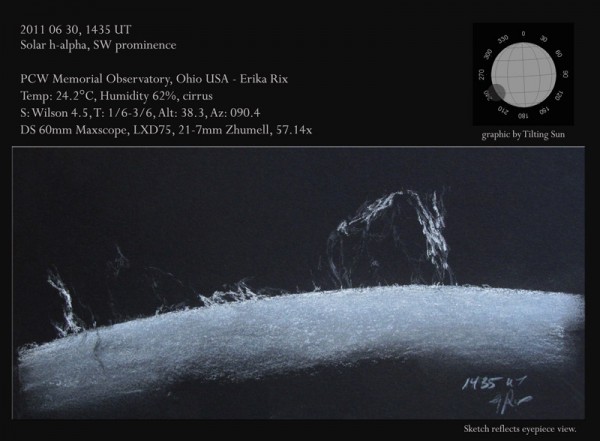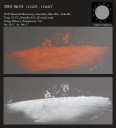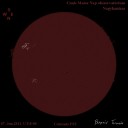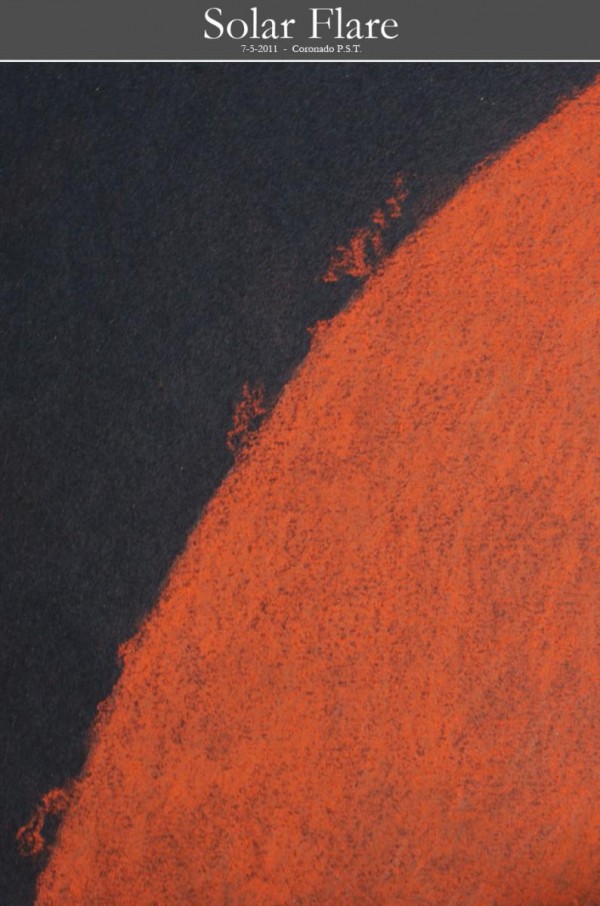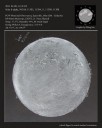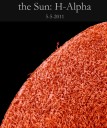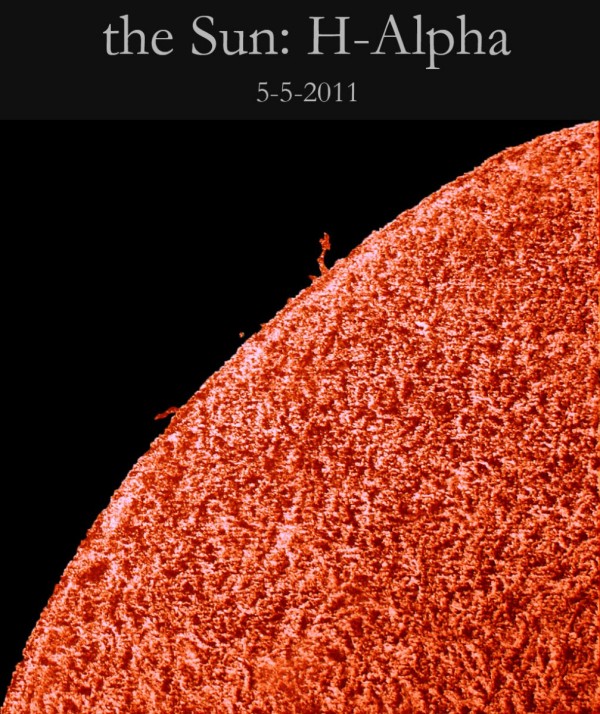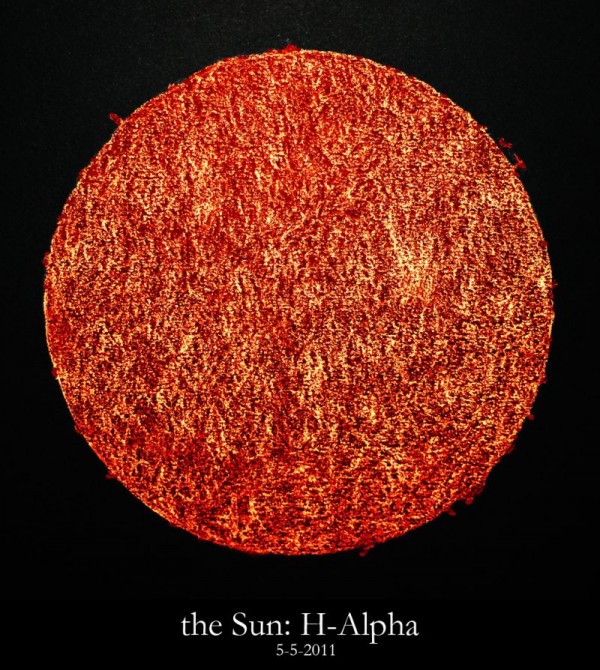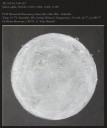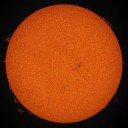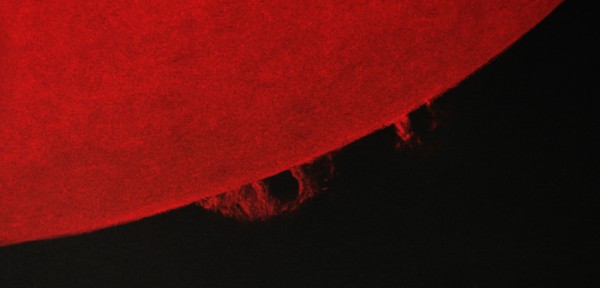2011 06 30, 1435 UT
Solar h-alpha, SW prominence
PCW Memorial Observatory, Ohio USA – Erika Rix (www.pcwobservatory.com)
Temp: 24.2°C, Humidity 62%, cirrus
S: Wilson 4.5, T: 1/6-3/6, Alt: 38.3 deg, Az: 090.4 deg
DS 60mm Maxscope, LXD75, 21-7mm Zhumell, 57.14x
Sketches created scope-side with black Strathmore Artagain paper, white Conte’ crayon and pencil, Derwent charcoal pencil, black oil pencil
At first glance, this SW prominence only showed a clear view of its northern leading edge and part of its upper arch. To the south, there was a very bright, segmented area of prominence. Transparency was very poor, but on moments of clearing up, I was able to bump up the magnification to show the very light detailed structure of plasma holding it all together. Then yet further to the south, a tall slender area of prominence forked at the tip and its filament reached into the solar disk in three areas, with the northern one being the longest. Again, I could see faint structures of prominence reaching southward from the segmented prominence.

